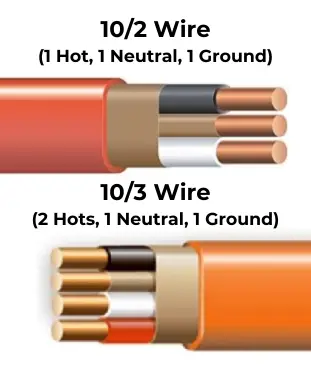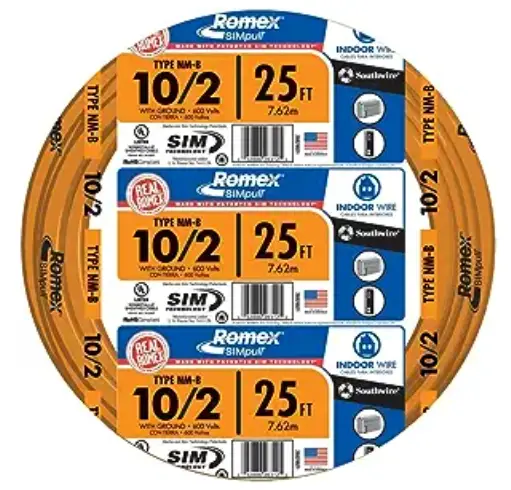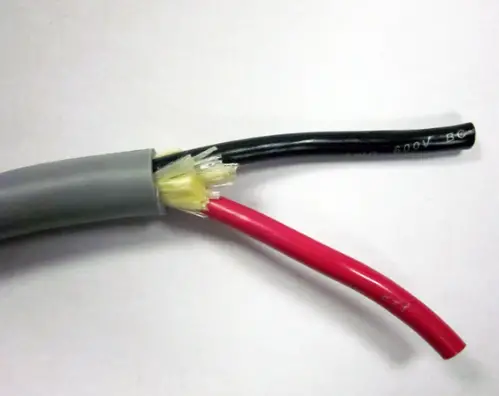When it comes to RV wiring, choosing the right wire gauge can be a daunting task. One of the most common questions that RV owners have is whether to use a 10/2 or 10/3 wire for RV wiring purposes.
When choosing 10/2 or 10/3 wire for RV, always use 10/2 wire because it’s more efficient than 10/3 wire. 10/3 wire has a second hot wire that is unnecessary for use within RVs.
Choosing the right wire gauge is crucial for ensuring the safety and functionality of an RV’s electrical system. Using the wrong wire gauge can lead to electrical problems and even pose a fire hazard. We’ll go over everything you need to know in this guide.
What Is 10/2 Or 10/3 Wire?

When it comes to wiring an RV, choosing the right wire is crucial. One of the most common questions is whether to use 10/2 or 10/3 wire. Both types of wire are commonly used in RVs, but they have different properties and are used for different applications.
What’s The Difference Between 10/2 and 10/3 Wire?
The main difference between 10/2 and 10/3 wire is the number of conductors they have. 10/2 wire has two conductors, while 10/3 wire has three conductors. The first number in the wire designation represents the gauge or thickness of the wire, while the second number indicates the number of conductors or wires within the cable.
10/2 wire is composed of a hot #10, a neutral #10, and a ground #10. It is commonly used for appliances that use single-phase power, including most RV air conditioners.
10/3 wire comes with two #10 hots, one #10 neutral, and one #10 ground. The insulated black wire is the hot, the insulated white wire is neutral, and the insulated green wire is ground. It is used for dual voltage appliances that require both 120V and 240V.
Another difference between 10/2 and 10/3 wire is the ampacity or the amount of electrical current that they can handle. 10/2 wire has an ampacity of 30 amps, while 10/3 wire has an ampacity of 40 amps. This means that 10/3 wire can handle more electrical current and is suitable for larger appliances that require more power.
Both 10/2 and 10/3 wire are types of NM (non-metallic) or NM-B (non-metallic sheathed) cable. This type of cable consists of two or more insulated conductors and a bare ground wire, all wrapped in a protective plastic sheath. NM-B cable is commonly used in residential and commercial wiring applications, including RVs.
Is 10/2 or 10/3 Wire Better For RV Charging Station Wiring?

You should use 10/2 wiring for an RV charging station because it’s more efficient and will require less work than using 10/3 wire.
10/2 wiring will still deliver the required 120V to the charging station, while using 10/3 wiring will require you to cap off the unused hot wire.
Save yourself the work and use 10/2 wiring for the charging station.
See Related: How Much Does It Cost To Install RV Hookups?
Limitations Of Using 10/2 Or 10/3 Wire For RV Electric

When it comes to wiring an RV, using the right wire size is crucial for safety and efficiency. While a 10/2 or 10/3 wire can be used for RV electric, there are some limitations to consider.
One of the main limitations of using a 10/2 or 10/3 wire for RV electric is voltage drop. Since most RVs operate on 120V or 220V systems, a voltage drop can cause appliances to work less efficiently or not at all. Using a 10-gauge wire can help reduce voltage drop, but it may not be enough for larger appliances like dryers or ovens.
Another limitation of using a 10/2 or 10/3 wire is overkill. These wire sizes are typically used for 30-amp service, but if the RV receptacle only requires 20 amps, using a smaller wire size like 12-gauge would be more appropriate and cost-effective.
It’s also important to note that using a 10/2 or 10/3 wire may not be suitable for all RV installations. Depending on the length of the wire run, conduit and Romex may need to be used instead. The RV breaker box and RV outlets may need to be upgraded to accommodate the larger gauge wire.

